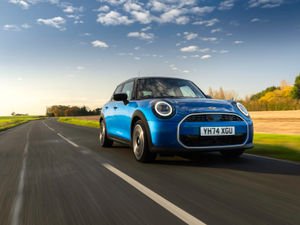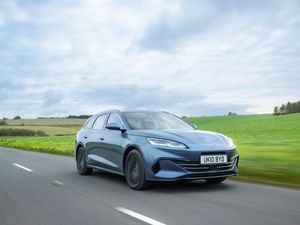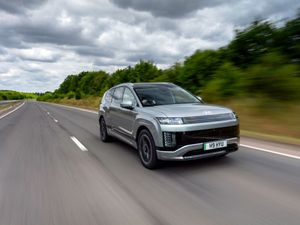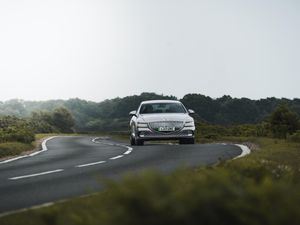First Drive: Audi’s A3 40 TFSI e bring plug-in hybrid power to the range
The new plug-in hybrid A3 may bring lower emissions and improved fuel usage, but what else can it offer? Jack Evans finds out.
What is it?

>
You may have noticed that hybrids are becoming a common sight throughout the vast majority of manufacturer line-ups. As a way of immediately bringing down company-wide CO2 emissions while also providing buyers with cars which bring with them lower running costs, you can understand why hybrids are having their time in the sun.
Audi is in the process of adding electrification to the majority of its line-up, too. The A3 plug-in hybrid – badged A3 TFSI e – is one of the latest to join the fray and we’ve been behind the wheel to see what it’s like.
What’s new?

>
As we’ve already mentioned, this is a plug-in hybrid version of the latest A3. It’s underpinned by a new platform, while the interior boasts some of the very latest technology which Audi has to offer.
We’ve already driven the new A3 and have found it to be impeccably competent when it comes to day-to-day driving, but this new hybrid version promises to bring all of that but with rock-bottom running costs thanks to the fitment of that electric motor and batteries.
What’s under the bonnet?

>
This A3’s powertrain is centred around an efficient and compact 1.4-litre turbocharged petrol engine. From here, it’s linked to an electric motor which is fed by a 13kWh battery with enough charge to drive the A3 on solely electric power for up to 37 miles in larger wheeled S Line specification cars, like ‘ours’.
In total, it produces 201bhp and 350Nm which, when driven through a six-speed dual-clutch automatic gearbox to the front wheels, is enough to get the A3 from 0-60mph in 7.3 seconds and onwards to a 141mph top speed.
But efficiency is the name of the game here, of course. Thanks to CO2 emissions of just 29g/km this is an Audi which will likely prove attractive to business users, while a claimed fuel consumption figure of 235.4mpg – with the batteries topped up – will be a hit with private owners. Via a home wallbox, a full charge will take just four hours.
What’s it like to drive?
The regular A3 offers up a well-sorted driving experience and this new hybrid variant is more an extension of this. The assistance of the electric motor adds a little extra zip to the car’s acceleration – this is the most powerful A3 model outside of the performance-orientated S3 versions, after all – while the quiet progress offered by running on electric power ensures that the A3 feels quiet and refined.
Trouble the 1.4-litre engine and it does impact on the otherwise quiet cabin, but not overly so.
The ride feels somewhat troubled by the extra weight imposed by the fitment of the batteries and suffers from a slightly fidgety sensation compared with the ‘regular’ A3. However, it’s not intrusive or distracting from the overall experience, just not quite as cosseting as its conventionally-driven stablemate.
How does it look?

>
There’s little way to pick the hybrid A3 from the standard variant, save for the additional electric charging port flap. It’s a smartly finished design overall and certainly leads on well from the previous-generation A3. The front air intake effect on the nose of the car mimics the design we’ve seen on the latest R8, A4 and A1, which helps to tie together the various models in Audi’s range.
In Sportback layout – Audi’s term for hatchback – the A3 looks quite conventional – particularly when finished in darker shades. We’d argue that brighter colours bring the car’s design to the fore instead.
What’s it like inside?

>
Though the cabin of the new A3 is dominated by screens, we’re pleased to report that many aspects of the interior have remained pleasingly old-tech. The controls for the heating and ventilation, for instance, are buttons and are far more intuitive and easy to use on the move than those integrated into touchscreen systems.
This, however, is contrasted by a new touch wheel style control for the volume and audio controls. Audi’s older rotary knob style controller was far easier to operate – so why change it?

That said, you cannot fault the A3’s cabin when it comes to build quality. Everything feels well put together and finished in high-end materials.
The boot, however, has been impacted by the fitment of the batteries. The hybrid offers up 280 litres, down a considerable 100 litres on the regular A3. Fold the rear seats down and this can be increased to 1,100 litres.
What’s the spec like?

>
As we’ve already mentioned, this latest-generation A3 is packing some of the very latest technology on offer. It features Audi’s excellent Virtual Cockpit – which comprises a 10.25-inch display in the instrument binnacle – and this is then combined with a 10.1-inch central touchscreen which houses all key media and navigation functions. It’s got Apple CarPlay too, helping to improve the way you can connect your smartphone to the car’s system.
The screen itself is simple and easy to navigate through and despite the A3’s lack of a central rotary controller, you don’t miss it given how simple the touchscreen is to use.
Verdict
This new hybrid powertrain really does add another level of appeal to the A3 package. Though the standard car is already quite efficient, the added bonus rock-bottom emissions will ensure that this TFSI e will be a tempting option for business car users thanks to a BIK rating of just six per cent on the smaller-wheeled models.
It’s backed by a well-packaged interior and a superb level of technology too. Though it might not be the most sparkling version of the A3 when it comes to driving dynamics, the positives of this low-emissions hybrid will surely outweigh the negatives.





